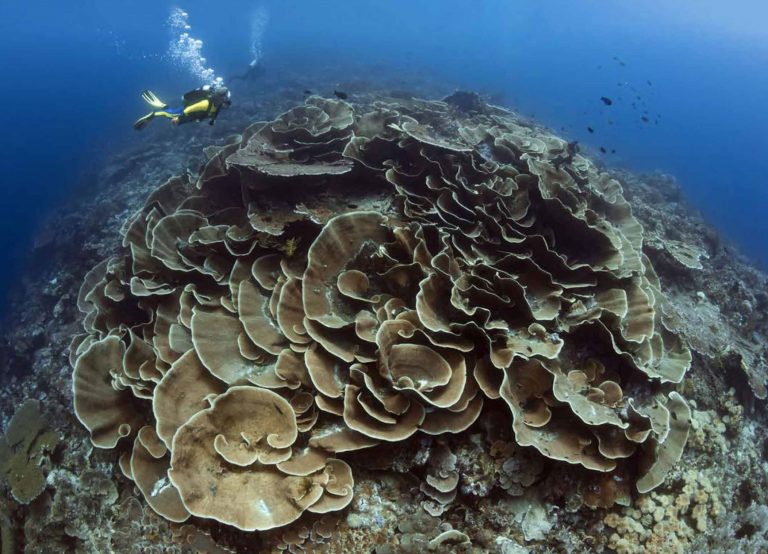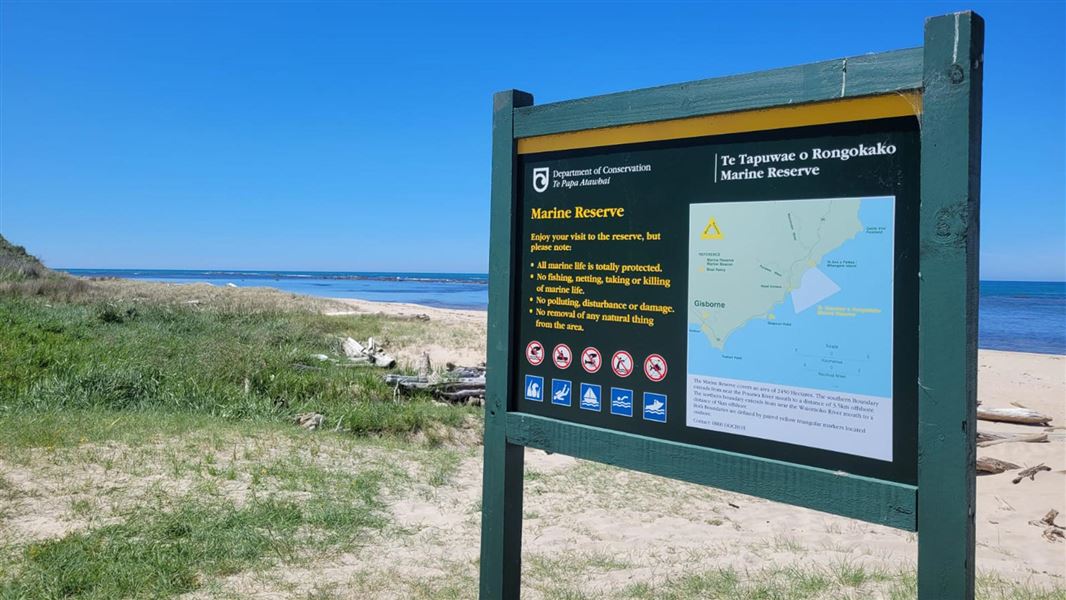Belize project seeks out heat-resilient corals to protect its reefs – Mongabay

Report on the Super Reefs Program: Aligning Coral Conservation with Sustainable Development Goals
Executive Summary
A multinational collaborative initiative, the Super Reefs program, is underway in Belize to identify and protect heat-resilient coral communities. This effort directly supports key United Nations Sustainable Development Goals (SDGs), particularly SDG 13 (Climate Action) and SDG 14 (Life Below Water), by developing strategies to mitigate the impacts of climate change on marine ecosystems. Through scientific innovation and strategic partnerships (SDG 9 and SDG 17), the program aims to provide the Government of Belize with data to inform national conservation and restoration policies.
Advancing SDG 14: Life Below Water
The program’s core mission is the conservation and sustainable management of marine biodiversity, a central tenet of SDG 14. By identifying corals with a natural resilience to thermal stress, the initiative provides a strategic framework for protecting vital underwater ecosystems.
- Objective: To locate and study coral communities in Belize that have the highest probability of surviving in warming ocean waters.
- Species Under Investigation: Research has focused on the varying resilience levels of different coral species.
- Thermally Tolerant: Massive starlet coral (Siderastrea siderea) has demonstrated consistent heat resistance across all study sites.
- Thermally Sensitive: Symmetrical brain coral (Pseudodiploria strigosa) was identified as being more vulnerable to heat stress.
- Other Species Studied: Mustard hill coral (Porites astreoides) and mountainous star coral (Orbicella faveolata).
- Geographic Findings: Coral communities in southern Belize were found to be particularly resilient.
Contribution to SDG 13: Climate Action
The Super Reefs program is a direct response to the climate crisis, implementing adaptation strategies to build resilience in vulnerable marine environments.
- Identifying Natural Adaptation: The research confirms that corals inhabiting naturally hotter areas of the reef have developed a higher tolerance to heat waves.
- Building Ecosystem Resilience: By focusing protection and restoration efforts on these “super reefs,” the program aims to ensure the future viability of coral ecosystems in the face of rising sea temperatures.
- Informing Policy: The findings will equip policymakers with the necessary tools to prioritize the protection of reef areas that are critical for climate adaptation.
Fostering SDG 9 (Innovation) and SDG 17 (Partnerships)
The success of the program is built upon a foundation of scientific innovation and multi-stakeholder collaboration, reflecting the principles of SDG 9 and SDG 17.
Methodology and Innovation
- Advanced Modeling: Researchers developed meter-scale, three-dimensional hydrodynamic models to replicate ocean conditions and predict locations of heat-tolerant corals.
- Experimental Validation: Cost-effective, portable heat stress tanks were engineered to simulate heat waves and test the resilience of coral samples directly.
Collaborative Partnerships
- International Academic Institutions: Woods Hole Oceanographic Institution (WHOI) and Stanford University.
- Non-Governmental Organizations: The Nature Conservancy (TNC).
- Governmental and Local Stakeholders: The Government of Belize and local experts, including boat captains whose knowledge was integral to locating live coral sites.
Future Implications and Recommendations
The program is scheduled to publish its complete findings by 2026, which will serve as a critical resource for Belize’s marine management strategy.
- Policy Guidance: The data will be used to inform the Belizean government on which specific coral communities are best suited for enhanced protection and targeted restoration efforts.
- Capacity Building: Technology and expertise have been transferred to the University of Belize, ensuring the continuation of this vital research locally.
- Strategic Restoration: The identified heat-tolerant corals will be prioritized for propagation, accelerating nature’s own adaptive processes and securing the future of Belize’s reefs.
1. Which SDGs are addressed or connected to the issues highlighted in the article?
-
SDG 14: Life Below Water
This is the primary SDG addressed. The article focuses entirely on the conservation and protection of marine ecosystems, specifically coral reefs in Belize. The “Super Reefs” program aims to identify, protect, and restore coral communities to ensure the health and survival of marine life and the ecosystem services they provide.
-
SDG 13: Climate Action
The article explicitly states that the initiative is a response to the threats of “climate change and other human-caused stressors” that are pushing coral reefs “closer toward collapse.” The research into heat-resilient corals is a direct action to strengthen the resilience and adaptive capacity of marine ecosystems to climate-related hazards like warming waters and marine heatwaves.
-
SDG 17: Partnerships for the Goals
The article highlights that the “Super Reefs” program is a “multinational collaborative effort.” It involves partnerships between U.S.-based academic and non-profit institutions (Woods Hole Oceanographic Institution, Stanford University, The Nature Conservancy) and the Belize government, along with other local stakeholders. This collaboration to share knowledge, technology, and expertise for a common conservation goal is central to SDG 17.
2. What specific targets under those SDGs can be identified based on the article’s content?
-
SDG 14: Life Below Water
- Target 14.2: By 2020, sustainably manage and protect marine and coastal ecosystems to avoid significant adverse impacts, including by strengthening their resilience, and take action for their restoration in order to achieve healthy and productive oceans.
Explanation: The article describes a program whose entire purpose is to find ways to protect and restore coral reef ecosystems. It aims to strengthen their resilience against heat stress caused by climate change. The findings are intended to “inform the Belize government which coral communities in the country are best suited for protection and restoration.”
- Target 14.2: By 2020, sustainably manage and protect marine and coastal ecosystems to avoid significant adverse impacts, including by strengthening their resilience, and take action for their restoration in order to achieve healthy and productive oceans.
-
SDG 13: Climate Action
- Target 13.1: Strengthen resilience and adaptive capacity to climate-related hazards and natural disasters in all countries.
Explanation: The project is a direct attempt to build the adaptive capacity of coral reef ecosystems. By identifying and potentially propagating corals that are naturally “more heat-resistant,” the initiative is strengthening the reef’s resilience to the specific climate-related hazard of rising ocean temperatures and heatwaves.
- Target 13.1: Strengthen resilience and adaptive capacity to climate-related hazards and natural disasters in all countries.
-
SDG 17: Partnerships for the Goals
- Target 17.16: Enhance the global partnership for sustainable development, complemented by multi-stakeholder partnerships that mobilize and share knowledge, expertise, technology and financial resources, to support the achievement of the sustainable development goals in all countries, in particular developing countries.
Explanation: The article details a partnership between international experts from WHOI, Stanford, and TNC, and national entities like the Belize government and the University of Belize. This partnership involves sharing scientific knowledge, expertise, and technology (like the “heat stress tank”) to support Belize’s conservation efforts.
- Target 17.16: Enhance the global partnership for sustainable development, complemented by multi-stakeholder partnerships that mobilize and share knowledge, expertise, technology and financial resources, to support the achievement of the sustainable development goals in all countries, in particular developing countries.
3. Are there any indicators mentioned or implied in the article that can be used to measure progress towards the identified targets?
-
For Target 14.2 (Life Below Water)
- Implied Indicator: Identification and mapping of heat-resilient coral communities. The article states the program built a map showing the heat gradient profile to identify areas with heat-tolerant corals.
- Implied Indicator: Survival rates of different coral species under heat stress. The article explicitly mentions that Massive starlet coral (*Siderastrea siderea*) was found to be tolerant, while symmetrical brain coral (*Pseudodiploria strigosa*) was more sensitive and “bleached the fastest.” This data can be used to measure ecosystem resilience.
- Implied Indicator: Area of coral reefs designated for protection and restoration based on scientific findings. The article notes the team’s findings will be used “to inform the government which coral communities are best suited for protection and restoration.”
-
For Target 13.1 (Climate Action)
- Implied Indicator: Development of science-based adaptation strategies for marine ecosystems. The entire “Super Reefs” program is an exercise in creating a strategy to adapt to warmer oceans. The plan to publish findings by 2026 to inform government policy is a direct measure of this.
- Implied Indicator: Use of local and scientific knowledge for climate adaptation. The article mentions that researchers “had to start relying on the boat captains to show us where these locations of live coral were,” integrating local knowledge into the scientific process.
-
For Target 17.16 (Partnerships for the Goals)
- Implied Indicator: Number of multi-stakeholder partnerships for conservation. The article describes the specific partnership between WHOI, Stanford, TNC, and the Belize government.
- Implied Indicator: Transfer of technology and expertise to local institutions. The article states that “the University of Belize has heat test tanks and the expertise established by Stanford University to continue this work,” which is a clear example of successful knowledge and technology transfer.
4. Create a table with three columns titled ‘SDGs, Targets and Indicators” to present the findings from analyzing the article.
| SDGs | Targets | Indicators |
|---|---|---|
| SDG 14: Life Below Water | 14.2: Sustainably manage and protect marine and coastal ecosystems to avoid significant adverse impacts, including by strengthening their resilience, and take action for their restoration. | Identification and mapping of heat-resilient coral communities. |
| Survival rates of different coral species (e.g., *Siderastrea siderea* vs. *Pseudodiploria strigosa*) under heat stress. | ||
| Area of coral reefs designated for protection and restoration based on scientific findings. | ||
| SDG 13: Climate Action | 13.1: Strengthen resilience and adaptive capacity to climate-related hazards and natural disasters in all countries. | Development of science-based adaptation strategies for marine ecosystems. |
| Integration of local knowledge (from boat captains) with scientific research for climate adaptation. | ||
| SDG 17: Partnerships for the Goals | 17.16: Enhance the global partnership for sustainable development, complemented by multi-stakeholder partnerships that mobilize and share knowledge, expertise, and technology. | Existence of a multi-stakeholder partnership (WHOI, Stanford, TNC, Belize government). |
| Transfer of technology (heat stress tanks) and expertise to local institutions (University of Belize). |
Source: news.mongabay.com

What is Your Reaction?
 Like
0
Like
0
 Dislike
0
Dislike
0
 Love
0
Love
0
 Funny
0
Funny
0
 Angry
0
Angry
0
 Sad
0
Sad
0
 Wow
0
Wow
0

















































:focal(1500,1000)/https://media.globalcitizen.org/a6/9a/a69a4720-d8a1-4715-b596-18738d03c05c/rotary_polio_hero_image.jpg?#)






/countries/sri-lanka/photo-credit---dmc-sri-lanka.tmb-1200v.jpg?sfvrsn=dc298bcc_1#)
















